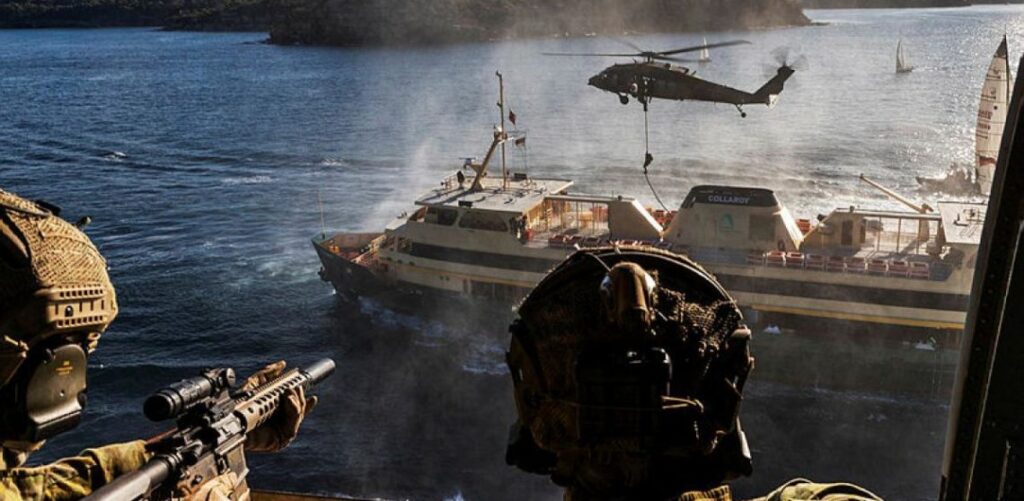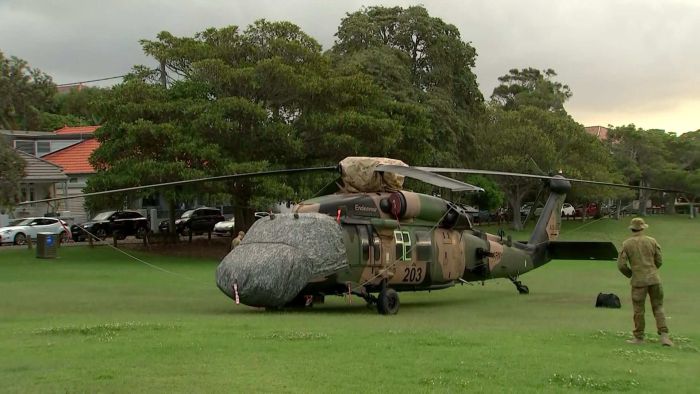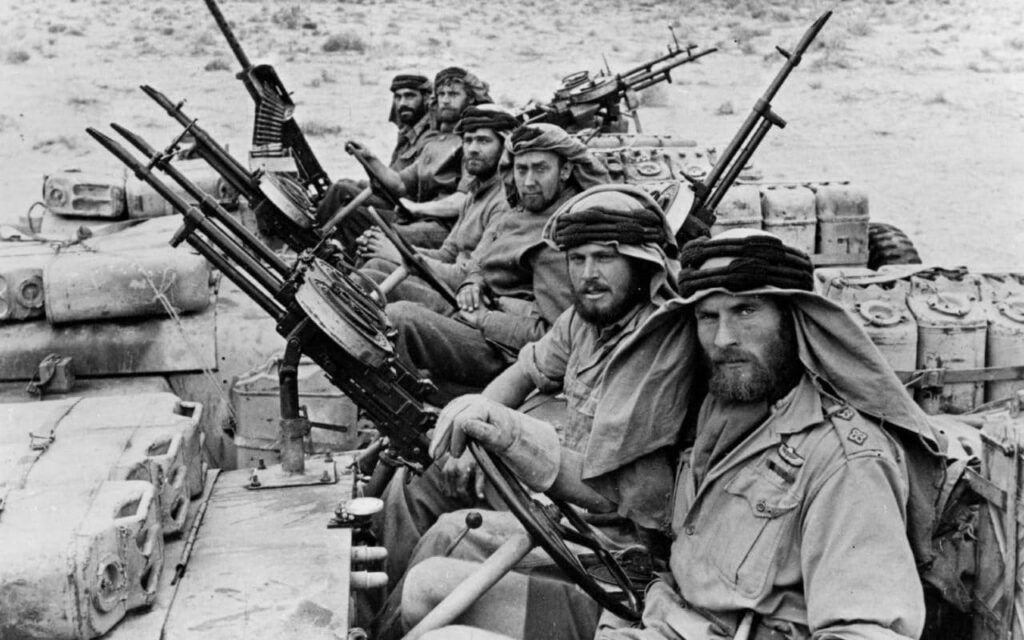WATCH: AUSTRALIAN BLACK HAWK LOSES ROTOR BLADE DURING SPECIAL OPERATIONS EXERCISE
- By Stavros Atlamazoglou
Share This Article

An Australian SA70 Black Hawk helicopter clipped a rotor blade during a counterterrorism exercise in the harbor of Sydney and had to perform an emergency landing in a nearby park.
The SA70 Black Hawk chopper was taking part in a maritime counterterrorism exercise, fast-roping commandos on top of a small cruise ship in the middle of Sydney harbor. It was holding station above the ship, having just placed its commandos on the vessel when one of its main rotor blades clipped a communications mast. Upon impact, debris scattered all over the scene.
But the pilots remained calm and coolly flew the aircraft to nearby Robinson Park for an emergency landing.
The Black Hawk helicopter was from the 6th Aviation Regiment (and most probably from the unit’s 171st Aviation Squadron). The 6th Aviation Regiment is specially trained and equipped to support special operations units.
https://twitter.com/jmscaronte/status/1362397588952080387
Video showing the Australian Black Hawk clipping a communications mast with one of its rotors.
Maritime counterterrorism is one of the toughest special operations mission sets. It involves numerous moving parts, from boats to helicopters, and has all the potential to go wrong. The goal is to reach the hostages and neutralize the terrorists as soon as possible. To achieve that in the fastest way possible, special operations units often use several insertion methods simultaneously. The skill required by the pilots and crews of the helicopters and boats is tremendous, especially if you consider that the target vessel might be moving and also account for the sea state.
This isn’t the first time an Australian Black Hawk supporting special operations troops is involved in an accident. In 1996, two Black Hawks supporting a Special Air Service Regiment (SASR) counterterrorism exercise in Queensland collided. As in the Sydney Harbor incident, one of the S70A Black Hawks clipped a rotor blade but this time against another Black Hawk. The first Black Hawk immediately went down, while the second crash-landed and went up in flames. In total, 18 troops (15 SASR operators and 3 aviators) were killed, making it the worse single loss of life in Australian special operations history.

The 6th Aviation Regiment is the Australian equivalent of the US 160th Special Operations Aviation Regiment, better known as the “Night Stalkers.â€
However, the Australian unit has more limited lift capabilities, currently operating only the S70A Black Hawk. In comparison, the Night Stalkers fly both the light AH/MH-6 Little Birds, MH-60 Black Hawks, and MH-47 Chinooks, thus providing light, medium, and heavy-lift options to their special operations customers.
Although the Special Air Service Regiment—the Australian military’s Tier 1 special operations unit and the equivalent of Delta Force and SEAL Team Six—used to be wholly responsible for domestic counterterrorism, that mission set is now been shared with the 2nd Commando Regiment, a unit similar to the U.S. 75th Ranger Regiment.
SASR operators man the Tactical Assault Group-West (TAG-W), which is responsible for domestic counterterrorism operations in the West part of Australia (the SASR is headquartered in Perth, West Australia). Commandos man the Tactical Assault Group-East (TAG-E), which is responsible for domestic counterterrorism operations in the East part of Australia, including the capital, Canberra.
Considering the location of the exercise, it is safe to say that these operators were from TAG-E.
Related Posts
Sandboxx News Merch
-

A-10 ‘Thunderbolt Power’ Framed Poster
$45.00 – $111.00 Select options This product has multiple variants. The options may be chosen on the product page -

‘Sandboxx News’ Camo Trucker Hat
$29.00 Select options This product has multiple variants. The options may be chosen on the product page
Stavros Atlamazoglou
Greek Army veteran (National service with 575th Marines Battalion and Army HQ). Johns Hopkins University. You will usually find him on the top of a mountain admiring the view and wondering how he got there.
Related to: Airpower, Special Operations

The Long Range Desert Group and the birth of special operations around the world

SDV: The secret weapon of the Navy SEAL Teams

C-5 Super Galaxy: Anywhere in the world in 24 hours

Ukraine peace negotiations don’t look promising
Sandboxx News
-

‘Sandboxx News’ Trucker Cap
$27.00 Select options This product has multiple variants. The options may be chosen on the product page -

‘AirPower’ Classic Hoodie
$46.00 – $48.00 Select options This product has multiple variants. The options may be chosen on the product page -

‘AirPower’ Golf Rope Hat
$31.00 Select options This product has multiple variants. The options may be chosen on the product page -

‘Sandboxx News’ Dad Hat
$27.00 Select options This product has multiple variants. The options may be chosen on the product page
